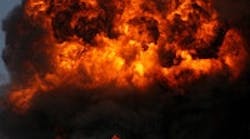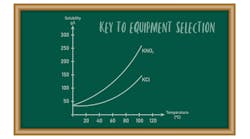When the West Fertilizer Company in West, Texas, blew up on April 17, 2013, killing 14 people, it must have taken Donald Adair, the owner of the plant, by surprise. In his 2011 emergency plan, Adair described the worst-case scenario for his plant as a 10-minute release of gas! Perhaps we chemical engineers don't appreciate the risks posed by dust as well as we do those of flammable fluids.
[pullquote]
One way to bolster your understanding of dust's risks is to check out Chemical Processing's free on-demand webinar "Dust Control: How to Identify & Manage Explosion Hazards." (Scroll down to the "Available To View Now!" section.)
[sidebar id=1]
You must estimate the severity of the risk and then its probability. NFPA 499, "Recommended Practice for the Classification of Combustible Dusts and of Hazardous Locations for Electrical Installations in Chemical Process Areas," lists many compounds that produce combustible dusts. If yours isn't on the list, test according to ASTM E1226, "Standard Test Method for Explosibility of Dust Clouds."
In simplified terms, ASTM E1226 involves disturbing a small volume of dust with a pulse of air, followed, after a prescribed time delay, by ignition with a small electrical charge. The dust must contain < 5% moisture by weight and have particles smaller than 420 microns in diameter (i.e., ones that pass through a U.S. No. 40 standard sieve). The test takes place in a bomb of at least 20 liters at ranges of dust concentrations, fuel/air ratios, and electric charges. The goal of this test is to estimate the maximum pressure, the rate of pressure rise with time, and the dust deflagration index, Kst, a measure of relative explosive severity; these parameters also are useful in designing deflagration vents. OSHA defines a dust as a hazard if its Kst exceeds zero; this definition won't protect you if your process produces fines, especially those smaller than 15 microns, which easily are converted to an aerosol. A Kst between 0 and 200 (when measured in bar-meters/sec) indicates a weak explosive risk typical of sugar.
ASTM E1226 can pose several problems: measuring the dust density accurately; accounting for the pressure spike from the igniters; maintaining a dry sample; mixing issues affecting dust and air combustion; and, perhaps, comparisons between bombs of different volumes. So, get as much data as you can on dust properties, do more bomb runs, evaluate the equipment and procedure for systemic faults, and compare your test data against a known standard.
With the severity estimated, it's time to consider the probability that a spark or heat could initiate a fire or explosion. Probability tests involve measurement of the minimum ignition energy (MIE), the minimum explosible concentration (MEC), the auto-ignition temperature (AIT), and the limiting O2 content (LOC). Except for the AIT, tests are for dust clouds. ASTM E2019 covers measuring the MIE of a dust cloud; ASTM E1515 the MEC of a cloud; ASTM E1491 the AIT of a cloud; and ASTM E 2021 the AIT of layered dust. No LOC test is approved in the US; ASTM has WK41004 in the works but Europe has DIN EN 14034-4:2004.
The spark risk is measured in milliJoules (mJ). OSHA states that "materials that ignite above 0.50 joules (500 mJ) are not considered sensitive to ignition by electrostatic discharge." Between 500 and 100 mJ, equipment and people must be grounded to reduce the risk of ignition. An MIE less than 25 mJ is extremely hazardous, posing a risk during bulk operations, e.g., pneumatic conveying, silo storage, etc.
German data from 1965–1985 show that electrical discharge represents only 10% of the ignition sources in 426 accidents. Unfortunately, it's not as easy to assess the danger from heat. Fire caused by grinding or another physical action, drying or even self-heating represents the greatest potential, and is poorly understood. I couldn't find any correlation directly connecting MIE and fire risk; it's more of an article of faith that a low MIE is a fire risk.
So, let's move on to mitigation. Here're some ideas: 1) keep surface temperatures 170°F below the AIT; 2) avoid rubbing of rotating parts; 3) reduce rotating speed; 4) maintain strict grounding policy (see: "Move Against Static Electricity"); 5) measure and decrease available oxygen; and 6) cut the quantity of dust by good housekeeping. Also, read the article "Dust Explosion Standard Gets Significant Revisions," which highlights important revisions to that standard for prevention of fire and dust explosions.
Hopefully, by focusing on temperature as well as electricity we can avoid more surprises for plant managers.



